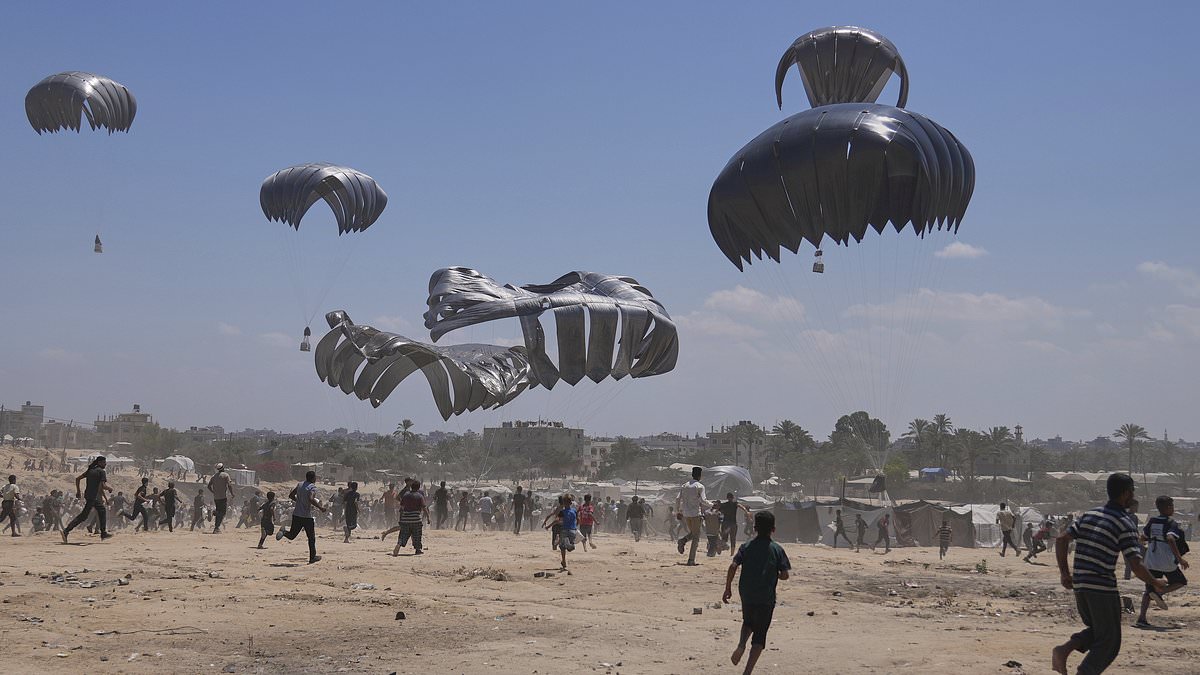As Gaza’s humanitarian crisis deepens by the day, a troubling pattern is emerging.
Most of the international aid making its way into the region isn’t actually reaching the people who need it most.
Instead, it’s being seized—either by armed groups or desperate civilians—long before it can get to its intended destinations.
Only a Fraction of Aid Is Reaching Those in Need
New figures from the United Nations paint a grim picture.
Since mid-May, nearly 30,000 pallets of aid have been brought into Gaza—but only 14 percent actually reached their final destination.
That means over 25,000 pallets were intercepted on the way, either taken by hungry civilians or seized by armed groups, according to the UN.
The UN Relief and Works Agency (UNRWA) has even accused armed militias of looting some aid deliveries at gunpoint.
Out of the 29,885 pallets brought in during that period, just 4,182 made it to their intended recipients.
That’s a staggering shortfall—especially considering these supplies were meant for people facing extreme hunger and malnutrition.
No Clarity on Who’s Taking the Aid
So, where exactly is all this missing aid going? That remains unclear.
The UN hasn’t been able to break down how much has been taken by Hamas militants versus how much was grabbed by desperate civilians among Gaza’s two-million-strong population.
But the scale of the disruption—amounting to 23,353 tons of lost aid—speaks volumes about the chaotic conditions on the ground.
Meanwhile, both Hamas and Israeli authorities continue to point fingers at each other over who’s to blame.
Charities Warn of a Deepening Crisis
Humanitarian workers are sounding the alarm.
Sarah Davies, who works with the International Committee of the Red Cross in Jerusalem, explained that getting aid trucks into Gaza isn’t the full solution—ensuring the supplies reach the people is what really matters.
“Right now, that’s not happening nearly enough,” she said.
Davies added that more and more patients arriving at Red Cross field hospitals are showing signs of malnutrition, especially children, who are at greater risk of delayed development and long-term health problems.
Basic medical supplies are also running dangerously low.
With the rising number of wounded patients, items like bandages, IV fluids, and surgical gloves are being used up faster than they can be restocked.
People Are Dying Just Trying to Get Food
Perhaps most heartbreaking are the stories of people getting injured—or even killed—while simply trying to access food.
Some don’t survive long enough to make it to a hospital.
“We’ve treated people who were shot while waiting for food,” Davies revealed.
“Some of them were declared dead on arrival. It’s devastating.”
Doctors Without Borders (MSF) echoed similar concerns.
Their staff have cared for hundreds of people who were either wounded or killed in their attempt to find something to eat.
A spokesperson for MSF described the food situation in Gaza as critically inadequate.
“Very little food is entering the strip, and most of what does rarely makes it to the hungry,” they said.
Aid Distributions Are Turning Into Bloodbaths
MSF also raised serious concerns about violence erupting around food distributions.
According to their team, some convoys have ended in bloodshed—either due to panicked crowds or because Israeli forces and foreign security contractors allegedly opened fire on people trying to get food.
The group placed blame squarely on Israeli authorities, arguing that as the occupying power, Israel is legally obligated to ensure humanitarian efforts are protected and aid is safely distributed.
“We need large-scale, safe delivery of aid—supported by a fully independent, UN-led humanitarian system,” the MSF spokesperson added.
Starvation Is Now Killing Children
The Gaza health ministry, which is under Hamas control, reports that at least 175 people—including 93 children—have died from starvation since the war began in October 2023.
The majority of aid pallets (nearly 99 percent) contain food, while the rest include fuel and medical supplies.
The World Food Programme has supplied about 90 percent of the aid.
Other key contributors include the World Central Kitchen and UNICEF.
More Violence at Food Distribution Sites
The situation on the ground remains dangerous, even for those just looking for help.
Gaza hospitals have reported that at least 23 Palestinians were recently shot dead while trying to collect food.
One eyewitness, Yousef Abed, described being caught in gunfire and seeing people bleeding out nearby.
“I couldn’t stop to help them,” he said, “because of the bullets flying around.”
According to UN figures, from May 27 to July 31, at least 859 people were killed near aid distribution points.
And hundreds more have reportedly died along UN aid convoy routes.
Desperation Is Everywhere, But Solutions Are Scarce
With starvation deaths rising and food convoys under attack, the humanitarian disaster in Gaza is escalating fast.
What aid does arrive often doesn’t reach the vulnerable groups it’s meant for—pregnant women, children, the elderly, and wounded patients.
Unless the international community can ensure safe and unimpeded delivery of aid, the suffering in Gaza is only set to get worse.

